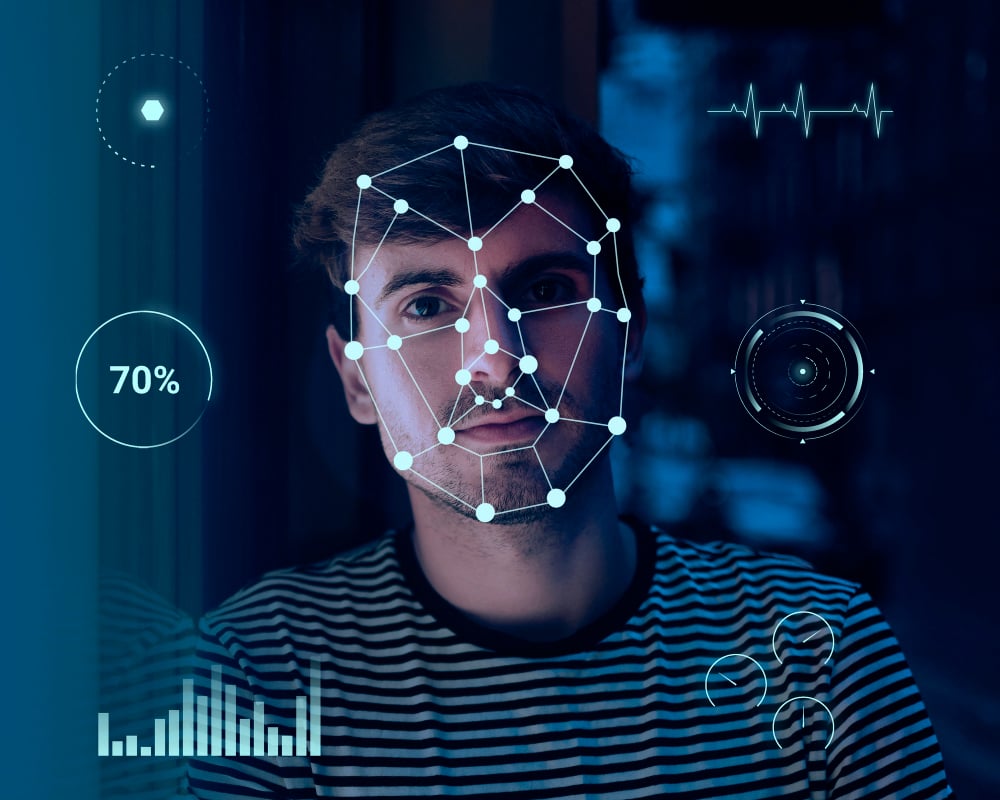In recent years, the world has witnessed a remarkable advancement in technology, and one such technological marvel that has gained significant attention is deepfake videos. Deepfakes refer to synthetic media, particularly videos, which are created using advanced machine-learning techniques.
These videos manipulate and superimpose existing images and videos onto source videos, resulting in highly realistic and often deceptive content. The rise of deepfakes raises numerous concerns and challenges, making it crucial to understand the technology behind them and the role of data science in combating their negative effects.

Understanding deepfake technology
Deepfake technology utilizes Artificial Intelligence (AI) and machine learning algorithms to analyze and manipulate visual and audio data. The process involves training deep neural networks on vast amounts of data, such as images and videos, to learn patterns and recreate them in a realistic manner.
By leveraging techniques like Generative Adversarial Networks (GANs), it can generate new visuals by blending existing data with desired attributes. This powerful technology has the potential to create highly convincing and indistinguishable videos, raising ethical and security concerns.
The role of data science
Data science plays a pivotal role in the development and detection of deepfake videos. With the increasing prevalence of this technology, researchers and experts in the field are employing data science techniques to detect, analyze, and counteract such content. These techniques involve the use of machine learning algorithms, computer vision, and natural language processing to identify discrepancies and anomalies within videos.

1. Deepfake detection and analysis: data scientists utilize a combination of supervised and unsupervised learning algorithms to detect and analyze these videos. By training models on large datasets of authentic and manipulated videos, they can identify unique patterns and features that distinguish it from genuine content. This process involves extracting facial landmarks, examining inconsistencies in facial expressions and movements, and analyzing audio-visual synchronization.
2. Developing anti-deepfake solutions: to combat the negative impacts, data scientists are actively involved in developing advanced anti-deepfake solutions. These solutions employ innovative algorithms to identify tampering techniques used in its creation and employ countermeasures to detect and expose manipulated content. Furthermore, data scientists collaborate with domain experts, such as forensic analysts and digital media professionals, to continuously refine and enhance detection techniques.
3. Educating algorithms with diverse data: data scientists understand the importance of diverse and representative datasets for training deepfake detection models. By incorporating a wide range of data, including various demographics, ethnicities, and social backgrounds, they aim to improve the accuracy and reliability of deepfake detection systems. This approach ensures that the algorithms are equipped to recognize it across different contexts and demographics.
Technologies to spot deepfakes
Let’s explore various methods and emerging technologies that can help you spot deepfakes effectively.
- Visual Anomalies: Deepfake videos often exhibit certain visual anomalies that can be indicative of manipulation. Keep an eye out for the following:
a. Facial Inconsistencies: Pay attention to any unnatural movements, misalignments, or distortions around the face. Inaccurate lip-syncing or mismatched facial expressions can be potential signs of its video.
b. Unusual Gaze or Blinking: Deepfakes may show abnormal eye movements, such as a lack of eye contact or unusual blinking patterns. These anomalies can help identify potential fakes.
c. Synthetic Artifacts: Look for strange artifacts or distortions in the video, such as unnatural lighting, inconsistent shadows, or pixelation. These inconsistencies may indicate tampering.
- Audio Discrepancies: With the rise of its audio, it is essential to consider auditory cues when evaluating media authenticity. Here are some aspects to consider:
a. Unnatural Speech Patterns: Deepfake audio may exhibit irregularities in speech patterns, including unnatural pauses, robotic tones, or unusual emphasis on certain words. Listen closely for any anomalies that seem out of character for the speaker.
b. Background Noise and Quality: Pay attention to inconsistencies in background noise or quality throughout the audio. Abrupt shifts or noticeable differences in audio clarity might suggest manipulation.
- Contextual Analysis: Considering the broader context surrounding the media can also aid in spotting them. Take the following factors into account:
a. Source Reliability: Assess the credibility and trustworthiness of the source that shared the content. These are often propagated through unverified or suspicious channels. Cross-reference information with reputable sources to ensure accuracy.
b. Reverse Image/Video Search: Utilize reverse image or video search engines to check if the same content appears elsewhere on the internet. If the media has been widely circulated or is present in multiple contexts, it may suggest a higher likelihood of authenticity.
c. Awareness of Current Trends: Stay informed about the latest advancements in deepfake technology and detection methods. As this technology evolves, new detection tools and techniques are being developed. Keeping up with these advancements can enhance your ability to spot them effectively
The future of deepfake technology
As deepfake technology continues to evolve, it is imperative to stay ahead of its potential misuse and develop robust countermeasures. Data science will continue to play a crucial role in this ongoing battle, with advancements in AI and machine learning driving the innovation of more sophisticated detection techniques.
Collaboration between researchers, policymakers, and technology companies is vital to address the ethical, legal, and social implications of deepfakes and ensure the responsible use of this technology.
In conclusion, these videos have emerged as a prominent technological phenomenon, posing significant challenges and concerns. According to VPNRanks, the deepfake content is expected to increase by 50-60% in 2024.
Hence, by leveraging data science techniques, researchers and experts are actively working to detect, analyze, and combat such content.
Through advancements in machine learning, computer vision, and natural language processing, the field of data science aims to stay one step ahead in the race against it. By understanding the technology behind deepfakes and investing in robust countermeasures, we can mitigate the negative impacts and ensure the responsible use of synthetic media.
